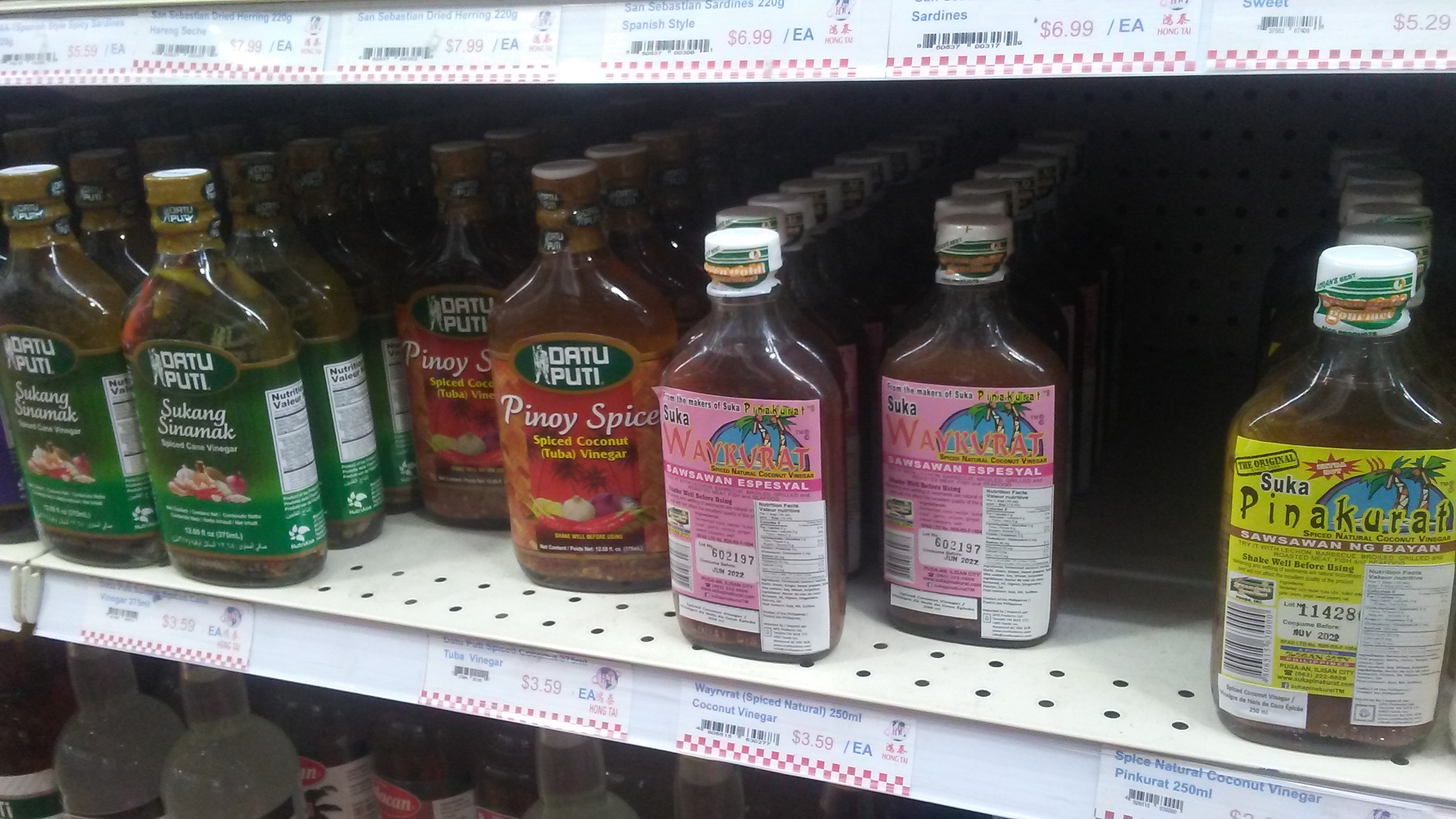Suka Pinakurat on:
[Wikipedia]
[Google]
[Amazon]
Spiced vinegar is a type of
 In Filipino households, this condiment is used on many assorted dishes, mostly fried dishes (includes lumpiang prito) and lechon.
In Filipino households, this condiment is used on many assorted dishes, mostly fried dishes (includes lumpiang prito) and lechon.
Philippine
The Philippines, officially the Republic of the Philippines, is an Archipelagic state, archipelagic country in Southeast Asia. Located in the western Pacific Ocean, it consists of List of islands of the Philippines, 7,641 islands, with a tot ...
vinegar
Vinegar () is an aqueous solution of diluted acetic acid and trace compounds that may include flavorings. Vinegar typically contains from 5% to 18% acetic acid by volume. Usually, the acetic acid is produced by a double fermentation, converting ...
condiment that is made of vinegar e.g. fermented coconut sap () infused with spices primarily bird's eye chili
Bird's eye chili or Thai chili ( owing to its shape) is a chili pepper variety (botany), variety from the species ''Capsicum annuum'' that is native to Mexico. Cultivated across Southeast Asia, it is used extensively in many Asian cuisines. It m ...
and garlic.
A variation of spiced vinegar was popularized by Rene Jose B. Stuart del Rosario of Iligan City in 2000 where the spices are finely chopped possibly with the use of a blender or food processor. This is now a mass-produced product under the brand name ''Sukang Pinakurat'' (derived from the Cebuano word ''kurat'', meaning to "surprise" or "frighten"). Due to its popularity, the Stuart del Rosario family in 2004 had registered trademarks for ''sukang pinakurat'', ''sukang waykurat'', and ''sukang kuratsoy'' with the Intellectual Property Office of the Philippines
The Intellectual Property Office of the Philippines (IPOPHL) is a government agency attached to the Department of Trade and Industry in charge of registration of intellectual property and conflict resolution of intellectual property rights in ...
.
Flavor and uses
 In Filipino households, this condiment is used on many assorted dishes, mostly fried dishes (includes lumpiang prito) and lechon.
In Filipino households, this condiment is used on many assorted dishes, mostly fried dishes (includes lumpiang prito) and lechon.
References
{{Philippines-cuisine-stub Philippine condiments Vinegar